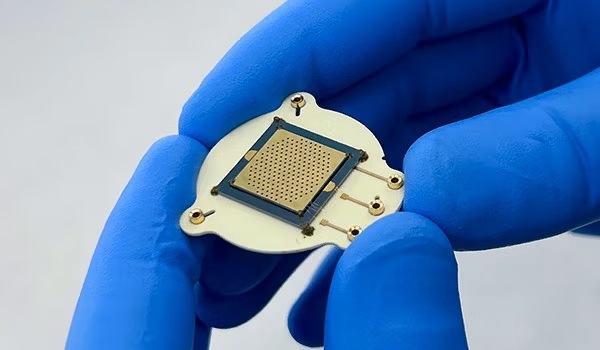New Gene Associated With Familial High Cholesterol
By LabMedica International staff writers
Posted on 26 May 2016
The gene that explains one quarter of all familial hypercholesterolemia with very high blood cholesterol has been revealed. Familial hypercholesterolemia is the most common genetic disorder leading to premature death, found in 1 in 200 people.Posted on 26 May 2016
The reason why lipoprotein(a) concentrations are raised in individuals with clinical familial hypercholesterolemia is unclear. The hypotheses that high lipoprotein(a) cholesterol and LPA risk genotypes are a possible cause of clinical familial hypercholesterolemia, and that individuals with both high lipoprotein(a) concentrations and clinical familial hypercholesterolemia have the highest risk of myocardial infarction.

Image: Clinical manifestation of Homozygous Familial Hypercholesterolemia, interdigital xanthoma (Photo courtesy of the National Organization for Rare Disorders).
Scientists at the Copenhagen University Hospital (Herlev, Denmark) carried out a prospective cohort study that included data from 46,200 individuals from the Copenhagen General Population Study who had lipoprotein(a) measurements and were genotyped for common familial hypercholesterolemia mutations. Individuals receiving cholesterol-lowering drugs had their concentrations of Low-density lipoprotein (LDL) and total cholesterol multiplied by 1·43, corresponding to an estimated 30% reduction in LDL cholesterol from the treatment. In lipoprotein(a) cholesterol-adjusted analyses, total cholesterol and LDL cholesterol were adjusted for the lipoprotein(a) cholesterol content by subtracting 30% of the individuals' lipoprotein(a) total mass before total and LDL cholesterol were used for diagnosis of clinical familial hypercholesterolemia.
The team used unadjusted LDL cholesterol, mean lipoprotein(a) concentrations were 23 mg/dL in individuals unlikely to have familial hypercholesterolemia, 32 mg/dL in those with possible familial hypercholesterolemia, and 35 mg/dL in those with probable or definite familial hypercholesterolemia. When adjusting LDL cholesterol for lipoprotein(a) cholesterol content the corresponding values were 24 mg/dL for individuals unlikely to have familial hypercholesterolemia, 22 mg/dL for those with possible familial hypercholesterolemia, and 21 mg/dL for those with probable or definite familial hypercholesterolemia. High lipoprotein(a) cholesterol accounted for a quarter of all individuals diagnosed with clinical familial hypercholesterolemia and LPA risk genotypes were more frequent in clinical familial hypercholesterolemia, whereas lipoprotein(a) concentrations were similar in those with and without familial hypercholesterolemia mutations.
Borge G. Nordestgaard, MD, a professor and the senior author of the study, said, “Our results suggest that all individuals with familial hypercholesterolemia should have their lipoprotein(a) concentrations measured in order to identify those with the highest concentrations and therefore also the highest risk of suffering a heart attack. Our findings will help identify the individuals with the highest risk of suffering a heart attack and hopefully facilitate better preventive treatment for these extremely high risk individuals.” The study was published on May 12, 2016, in the journal The Lancet Diabetes & Endocrinology.
Related Links:
Copenhagen University Hospital













